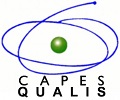Aesthetics of the residual. Ruin, materiality and writing in Carlos Ríos
DOI:
https://doi.org/10.14409/tb.v1i11.9161Keywords:
ruin, materiality, image, temporalityAbstract
In the recent Argentine literature it is possible to note the emergence of demolished spaces, heterogeneous times, remnants and waste. From the apocalyptic scenarios to the excess of garbage and rubbish, the residual becomes relevant and produces a mismatch in the contemporary aesthetic imaginary. We would like to read this displacement from the figure of the ruin and the field of relations that opens between image, writing, materiality and time. How are the remains of the past reactivated? What language names them? What procedures operate there? This work explores in the writing of Carlos Ríos -Manigua and Cuaderno de Pripyat- the link that it establishes with a series of images on the edge of decomposition. Both fictions configure a present time that is split, or in other terms a temporality marked by the remains of a fragmentary world. Ruin, in this sense, redefines the state of matter and the present, since its appearance in the contemporary scenario reverses the decadent diagnosis to affirm itself as the material persistence of the past in the present.





















